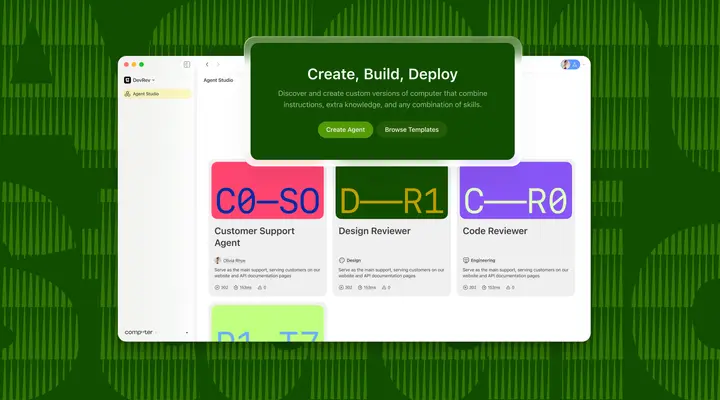One week after getting my driver’s license, I was off to Silicon Valley to join an early-stage software startup. I worked on the very first POC with an early version of our product. Things would break all the time, and I’d FTP over logs and debug with our engineering team. Velocity was everything. We were solely focused on learning with customers and building a product that became integrated as a critical part of our customers' releases and chip tape-outs.
Over the next 7 years, I drove from customer to customer and flew all over the US and the world to the largest tech companies. Due to data sensitivity, we couldn’t bring customer designs to our servers, and I’d stay past midnight at customer offices running our software on their chip designs, finding ways to reduce risk, increase speed, and lower costs. We helped ship the most foundational chips that now power the internet, mobile devices, graphic computers, personal computers, servers, and more.
Customers paid us $200K per license per year. At a time when the subscription business model didn’t exist, it was sheer genius of our CEO to build a recurring revenue engine. It meant that we kept our customers happy after the sale with products that continued to be impactful. This ultimately drove a self-propelling GTM engine. We were founded with $2M in seed funding, became cash flow positive in less than 5 years, and generated $50M in annual recurring revenue before being acquired by a software giant. It was highly efficient.
Fast forward 13 years, and the fundamentals of business haven’t changed. The customer and product are the core of a business. However, in every role and every company since, I lacked the observability needed to be better at my job. I had the role of an individual contributor, a manager, and an executive at different companies.
As an individual contributor at a $50B scale, and coming from a small company where I knew everything and everybody, I struggled to answer the most basic questions. It took me months to understand the jobs of multiple people with similar titles. Even after a year, I couldn’t confidently say that I understood the business. What does each product do? Who does it serve? How do all the people and their work fit together? I’d rely on presentations, most of which were poorly done and left so much untold. I solved one business problem at a time, and while I got promoted every year or two, there was so much more to yearn for.
Then I began to take roles with more exposure to the business, managing a $5B portfolio and reporting into the GM, where I could learn how decisions were made. A lot of my questions got answered, but I learned how little people at that vantage point knew about the ground reality. We were distanced from engineering, product, and sellers too. We relied on people for answers – our product managers, sales heads, finance partners, program managers, business operations, and so many other span breakers. They helped us observe the business.
When I became a manager, I only felt more responsible for my people. Their work needed to tie into the company’s purpose, and I personally battled with giving my team autonomy while not overly concerning them on status reports and where things were, less I appeared to micromanage. The reality was that I had to manage risk, and I could only do that if I understood how things were going against our goals.
I presented proposals to committees for funding, product launches, price increases, and more. Building these proposals meant I had to extract data from multiple sources and bring the stories and information that would help executives make the right decisions. It was great fun, but a ton of work to make the most informed decisions, some of which were incorrect in retrospect. The best decisions were made when we truly could observe the team as well as the business.
When I became an executive, my role was to work with other executives and build into the quarterly, yearly and multi-year horizon. Visualizing how each function came together was complex, so we implemented company and departmental OKRs and KPIs. We spent weeks leading into our QBRs on presenting the state of things. We’d pull in data from sales CRM, customer support, engineering work management, software code repositories, CICD systems, collaboration tools, HR systems, and more – so we could divert our investments to maximize business impact. We needed to observe every department, and how they connected with each other and the business.
Like most companies, we integrated every system with each other. Jira was connected to GitHub and collaboration tools like Confluence and Google workspace, and so was it connected to frontline tools like Zendesk, which was then connected to Salesforce. We had workplace collaboration tools like Slack and Email where notifications were pushed, and oftentimes overloaded. This is how every company I knew seemed to operate, and yet, we couldn’t answer the key question – are we maximizing our resources to work on the most important things?
Observability only became harder as we scaled, so we began to work with two vendors, and spent $100K each to build a tool that could connect all these systems together and provide us business level observability. Both of these engagements failed, and so did our attempt to build this in-house.
Why was this a hard problem? These existing tools, they didn’t speak a common language. They solved for departments, not the entire business. They were each built in a period when modern tech like real-time collaboration and AI didn’t exist, and any attempt to bolt these on just made the systems clunkier.
So to solve this problem, we had to re-imagine, re-architect, and start with a blank slate. And that was the birth of DevRev. As the first employee and founding member, I continue to feel deeply connected with the purpose because of my personal journey preceding the founding of DevRev.
First, we built a common platform that connects every department and speaks the language of both the product and the customer, which is core to every business.
Our data model serves and interconnects front office and back office departments, particularly customer support, product management, engineering, customer success, sales, and product marketing – by speaking the language of their work towards the products and their customers.
The platform syncs with data currently siloed in systems of record like Jira, Salesforce, Zendesk using DevRev AirSync technology, and delightfully connects with engagement platforms like Slack, email, social media, as well as in-app chatbots, and tools such as GitHub, which are core to software companies. The value stream captures developer keystrokes at one end, and the voice of the customer, along with user keystrokes and session recordings for deep understanding, at the other end. Our integrations are self-serve and would otherwise require people and programs to operate.
This common platform is strengthened by its data, known as the knowledge graph, its customization, and access through semantic search and consumer-grade design. This is foundational in providing observability to every individual, manager, and executive in the company, helping them do their job better.
Next, we unlocked a set of use cases so customers can replace some existing systems, coexist with others, and replace more at their own pace. Our customers save more costs when they adopt more use cases and displace multiple tools, while eliminating the need for access to expensive systems like Salesforce, and reducing the integration, implementation, and administration costs required to stitch and manage multiple tools.
While we started with customer support use cases powered by the common platform, over time we aim to disrupt and displace several tools in the categories of AI chatbots, customer support ticketing, engineering work management, product planning, sales CRM, customer success, product and user analytics, and incident management.
Finally, we leveraged modern technologies to bring the highest efficiencies to every department and hence to your entire business. We built clustering, classification, routing, and summarization to remove inefficiencies, paving the way for humans to perform more complex and meaningful tasks that align with their true north: the customer.
The enterprise-wide data convergence made possible through our platform only makes it more suitable to train AI and leverage all the gains of the past year. This data convergence also enables people across departments to collaborate meaningfully (through messages, audio, video, screen share) with the right context. In the post-GPT era, the blending of design and AI helps us fine-tune LLMs with the customer, delivering high accuracies for your customer-facing applications such as deflection, personalization, and engagement.
Our modern workflow engine can run without requiring users and admins to set up infrastructure or write complex code, achieving much through natural language. Our analytics engine is blazingly fast, utilizing the latest in-browser technology and real-time pipelines, and it is customizable via SQL notebooks, and accessible through natural language queries. We understand the importance of integrating seamlessly into your business processes and delivering the analytics crucial for running your business as you scale.
Ultimately, our goal is to simplify the operation of your business. Every person in your company needs to be empowered with data that helps them perform their jobs more effectively. We aid new employees in onboarding faster and make everyone more efficient in their roles, while eliminating costs associated with multiple tools, integrations, and implementations – and simply help you bring the voice of the customer to every team. In today's fiercely competitive tech landscape, where customers have abundant choices and low barriers to switching, staying ahead means being deeply attuned to their feedback. So, we help you do what matters most, and we do this efficiently.





